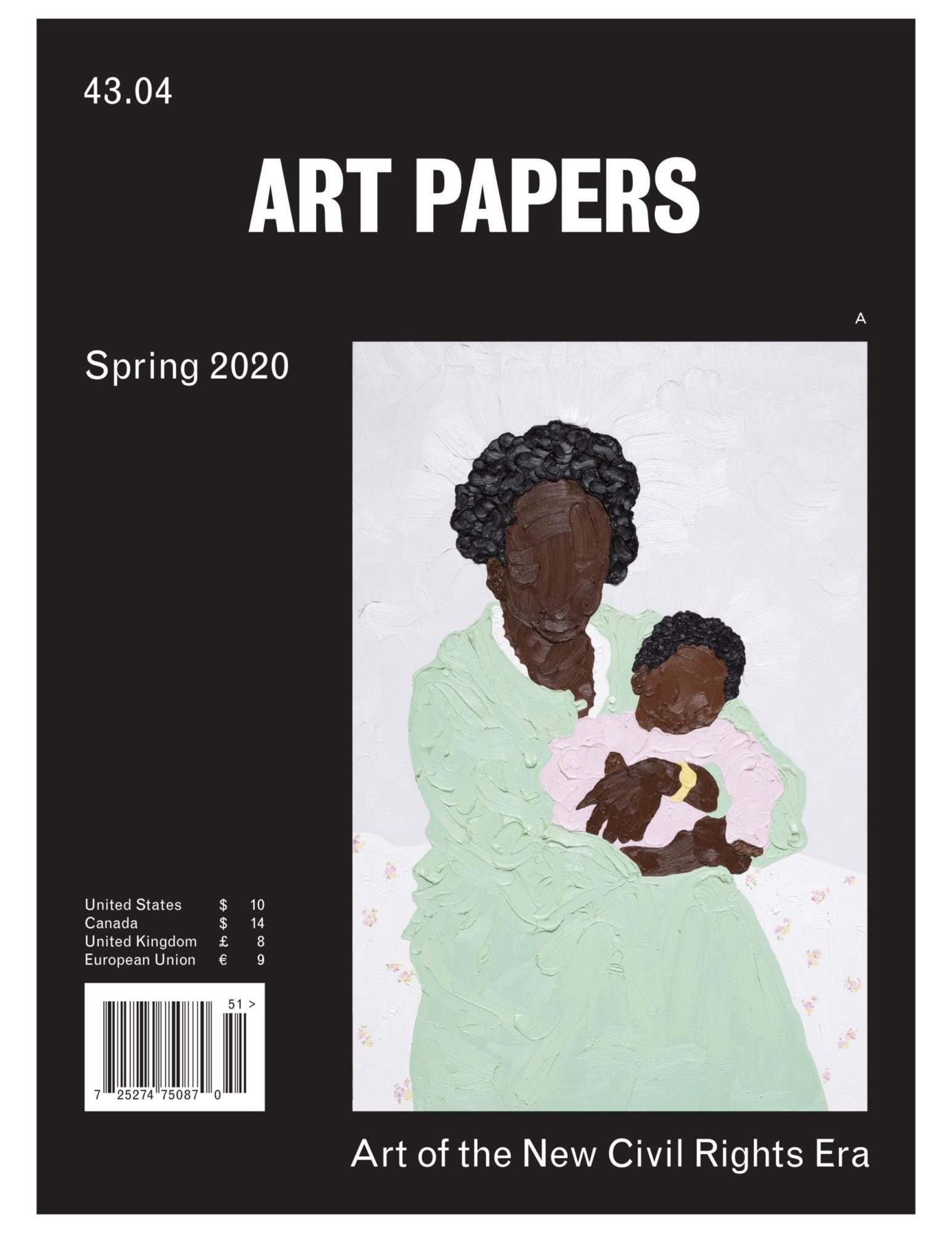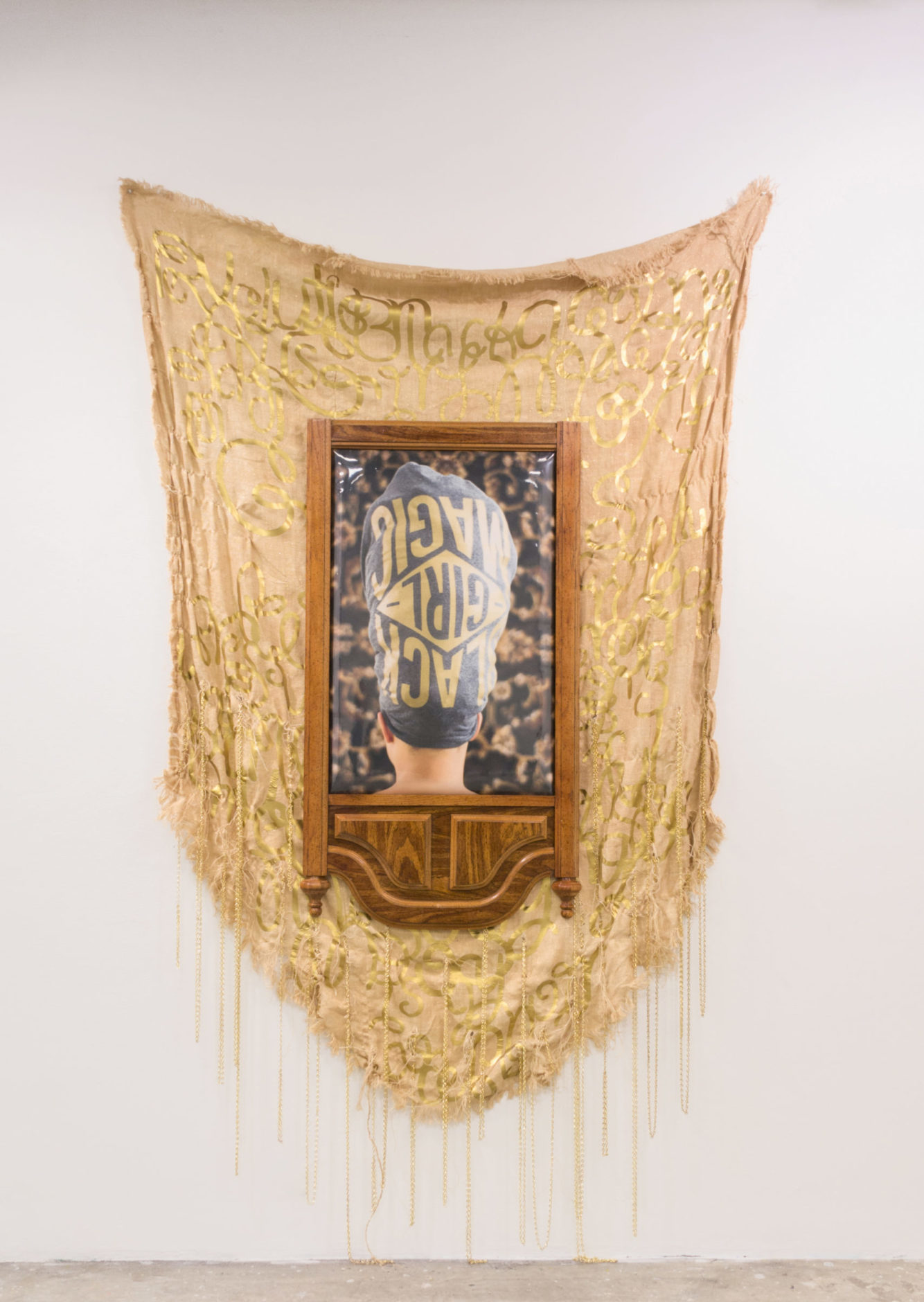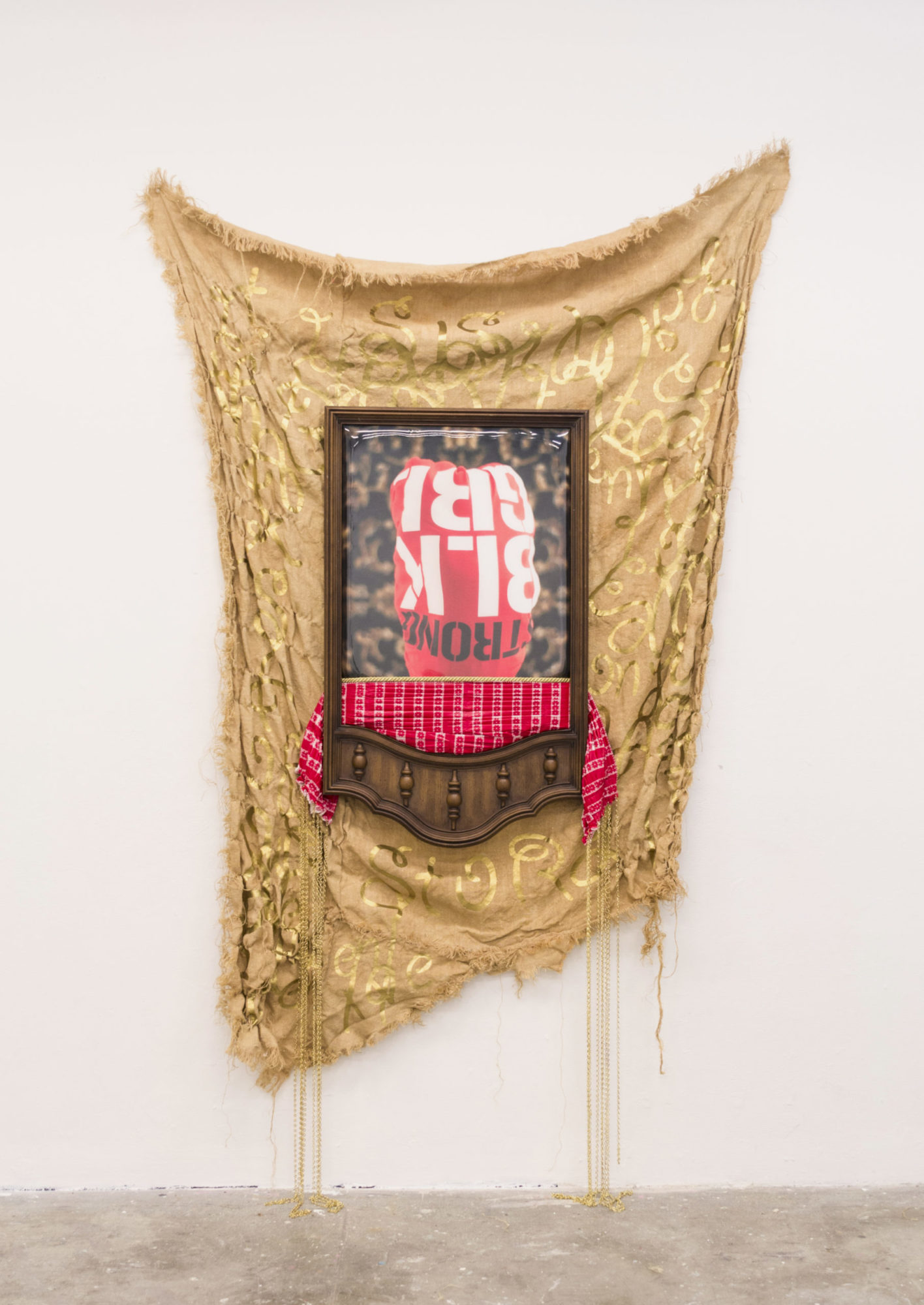Art of the New Civil Rights Era
Share:
This issue of ART PAPERS looks to artistic practices that participate in contemporary civil rights discourse—one that is historical and intersectional—through art making and exhibition making that celebrate Black and African American resistance and resilience. Essays, interviews, reviews, and a special artist spotlight dossier emphasize art making in the wake of—and in response to—what has been called a “new civil rights era.” To clearly frame what is meant by “new” in this thematic context, Lauren Tate Baeza—director of exhibitions at the National Center for Civil and Human Rights—begins her text, The New Civil Rights Moment: A Recap, in 2012, with the slaying of Trayvon Martin, the acquittal of his killer, and the rise of #BlackLivesMatter, thus tracing a thread through social media and the proliferation of smart phone video cameras to today.
In the arts, organized efforts and sustained pressure have led museums, collectors, and other institutions to engage in highly publicized expansions of their long-held, vastly White articulations of the canon. They have done so through collecting works by artists of color, with particular emphasis on Black and African American artists. In response to this pivot, a prevailing narrative in arts journalism has too frequently shifted focus onto valorizing the actions of (still) primarily White actors: the museums, auction houses, critics, and collectors.
Although visibility and market viability are important steps for artists who have been, and continue to be, excluded from the institutional and financial spaces of contemporary art, this issue of ART PAPERS seeks to concentrate on the artists and their work, and how they respond to the social and political backdrops of their practices. The Dossier, a special section in this issue, highlights the work of significant, but somewhat lesser-known artists, while also demonstrating the work being done between artists and institutional actors of color (curators, critics, writers, etc.). In spotlighting the artists, the Dossier simultaneously highlights collaborations that de-center White-dominated practices of contemporary art presentation.
This issue borrows the black background and white text of the iconic Black Lives Matter graphic design. The cover artwork by Shaina McCoy was chosen from Dossier works, with the understanding that it must be flexible, yet iconic enough to hold the weight and multiplicity of perspectives represented in the theme. The painting, Great Aunt Dorothy and Mel, shows an intergenerational image of family intimacy, care, and protection. In this context, it honors the role of women as leaders, innovators, and foot soldiers in the contemporary civil rights movement. The faces in McCoy’s works are featureless, inviting viewers to project their own experiences and kinships onto the figures, and this very function of the work orients itself—casually, confidently, and crucially—to a decidedly non-White gaze.
This issue has been in development for more than a year, but in the short time since its texts were completed, the world has turned on end thanks to COVID-19. To some, it could seem that this issue’s theme is now poorly timed—a diversion from the pandemic that currently, rightly, dominates our collective thoughts. It is precisely in these times of crisis, however, that long-standing systemic inequalities must be held in view and interrogated. We believe, of course, that the work and voices of artists are crucial to such a pursuit. If we must rebuild a new normal, the work of doing so must not be allowed to fall to those who have sought to uphold a broken and exploitative normalcy in the past. It must be done by those who’ve been fighting for a new normal all along.
Rather than a glancing overview of each text, I want instead to extend my deepest gratitude to every one of this issue’s contributors. In countless ways, each of you went above and beyond, dug deep, made yourselves vulnerable to ensure that this issue would be as strong, open, honest, and fearless as it is. When writing about race, even the most objective observation is simultaneously personal. Thank you, Lauren Tate Baeza, for tackling the challenge of framing this issue’s theme with so much focus and care. Thank you, Re’al Christian, for your eloquent art historical case study of recent group exhibitions in The Moment Is Not Sufficient. Thank you, Mia Harrison and Randy Ford, for your vibrant conversation about creating and protecting spaces for queer and trans people of color in How To Pave a Street for Queens. Thank you, Sarah Lauro, for your thoughtful report as a performance observer and implicated participant in Dread Scott: Beyond History. Thank you, Kevin Young, for speaking with Courtney McClellan about the racialized history of truth, fiction, and hoax. Thank you, TK Smith, for your impassioned and deeply personal take on the problematics and potentials for representations of Black people in Toward a Monumental Black Body. Thank you to all the Dossier contributors: Tyra A. Seals, Allison Glenn, Hallie Ringle, Jessica Bell Brown, Stephanie E. Goodalle, Nzinga Simmons—for the texts you wrote in honor of your chosen artist and for the work you do every day as curators and educators to thoughtfully connect artists and audiences. Thank you, Christopher Joseph Lee, for your glossary entry, Opacity (n.), which acknowledges the beauty, productivity, and radicality of that which is intentionally unknowable and unrepresentable. As always, this issue includes a section of reviews. In the interest of space for this issue, and continuing more than ever before, additional reviews are available and being actively published online at ARTPAPERS.ORG.
Finally, a special thanks to longtime ART PAPERS copy editor Ed Hall. Our mutual respect opens a space to challenge each other’s assumptions, positions, and habits. In anticipation of this issue, we re–evaluated and revised the ART PAPERS style guide entry on the capitalization of Black and White. A conversation about our path to that decision, along with other texts that enrich and expand this issue’s theme, will be published exclusively on ARTPAPERS.ORG.
Sarah Higgins
Editor + Artistic Director
editor@artpapers.org
Stephanie J. Woods, A Radiant Revolution I, 2018, Burlap dyed with sweet tea, woven brass chains, t-shirt, vinyl, dresser mirror frame, and upholstered taffeta print, 108 x 66 inches [photo: Johannes Barfield; courtesy of the artist]
Stephanie J. Woods, A Radiant Revolution II, 2018, Burlap dyed with sweet tea, brass chains, t-shirt, vinyl, red tablecloth, gold rope, dresser mirror frame, and upholstered taffeta print, 108 x 60 inches [photo: Johannes Barfield; courtesy of the artist]
Stephanie J. Woods is a multimedia artist from Charlotte, NC. Woods earned an MFA from UNC Greensboro and is the recipient of several residencies and fellowships, including Halcyon Arts Lab social impact fellowship, the Fine Arts Work Center fellowship, ACRE Residency, the McColl Center for Art + Innovation, Ox-Bow School of Art and Artists’ Residency, and Penland School of Craft. Her work as also been notably recognized by the Chenven Foundation, the South Arts State Fellowship, and the North Carolina Arts Council Artist Fellowship Award.


